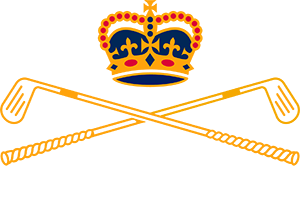
 Over the past 15-20 years the Club has continued on the path of eradicating Poa annua (Poa) and restricting its invasion into fairways and greens. Over the years, it has become increasingly difficult to keep surfaces free from Poa and herbicides, both pre and post control, are having less efficacy. Poa is an amazing plant, its dominance is worldwide and along with Rye Grass, are the two most prevalent weeds in the world. The reason Poa is so dominant is that it can be self-pollinating, meaning that if one plant survives an application of pre-emergent (chemical to control the emergence of seedlings) or a post-emergent (chemical to control existing weeds) then that plant will self-pollinate and the seedlings will become an exact replica of its parent, which means it will also be resistant to chemical control. As years have gone on, we have rotated the pre-emergent and post-emergent herbicides with limited success. Seven years ago, we were still having an acceptable control percentage but over the past few years, the percentage has reduced significantly. In South Australia, we must use turf-registered chemicals which are expensive and there are very few, if any, new products coming to market, meaning there really isn’t a silver bullet or easy fix that we can rely on.
Over the past 15-20 years the Club has continued on the path of eradicating Poa annua (Poa) and restricting its invasion into fairways and greens. Over the years, it has become increasingly difficult to keep surfaces free from Poa and herbicides, both pre and post control, are having less efficacy. Poa is an amazing plant, its dominance is worldwide and along with Rye Grass, are the two most prevalent weeds in the world. The reason Poa is so dominant is that it can be self-pollinating, meaning that if one plant survives an application of pre-emergent (chemical to control the emergence of seedlings) or a post-emergent (chemical to control existing weeds) then that plant will self-pollinate and the seedlings will become an exact replica of its parent, which means it will also be resistant to chemical control. As years have gone on, we have rotated the pre-emergent and post-emergent herbicides with limited success. Seven years ago, we were still having an acceptable control percentage but over the past few years, the percentage has reduced significantly. In South Australia, we must use turf-registered chemicals which are expensive and there are very few, if any, new products coming to market, meaning there really isn’t a silver bullet or easy fix that we can rely on.
Last year was the first time no pre-emergent herbicide was applied to the fairways in around 20 years, and the difference in Poa numbers from the previous year wasn’t significant. What was apparent was the quality of the fairways during the winter months, this may have been due to the weather conditions over the season – as the quality of the common couch and the reduction of worm castings last year was noticeable. Again, this year we haven’t applied herbicide to the fairways and will continue to monitor the turf quality, along with Poa numbers and worms.
Pre-emergent herbicides work by cutting the roots of the new seedlings, as the root emerges from the seed the chemical damages the root which in turn destroys the seed. For this reason, pre-emergent can’t be used on the Bent grass on greens, the damage to the root system means the Bent would suffer and under any stress, the grass would thin out and die. The couch grass on the fairways has a much stronger root system so it can withstand the pre-emergent, this is the reason it is used so widely on fairways. As the years have gone on the pre-emergent has become longer lasting, and therefore ever persistent in the soil profile. There are thoughts that this persistent effect on the root system of the couch may reduce the health of the plant, causing a longer period of winter dormancy and a slow response to the warmer weather, particularly in the common couch which we predominantly have. Over the years, golf clubs are having to apply more fungicides to fairways to control diseases that were historically never a problem, this could be due to the continued pressure from the pre-emergent. The applications of herbicides and fungicides continue to add chemistry to the soil, with the shift in our current philosophy this may help with the grass and soil profile health.
There are no simple answers to turf maintenance, each grass variety has different needs. Then we have different breeds within a variety, along with different soil types and small micro-environments, shade issues combined with wear and traffic to deal with. It’s not as black and white as it may seem, changing a practice or conducting a trial may take 1-2 years to see a result, good or bad.
We will continue to monitor the fairway surfaces to ensure they remain at a standard expected by our Club.
Nathan Bennett
Course Superintendent

